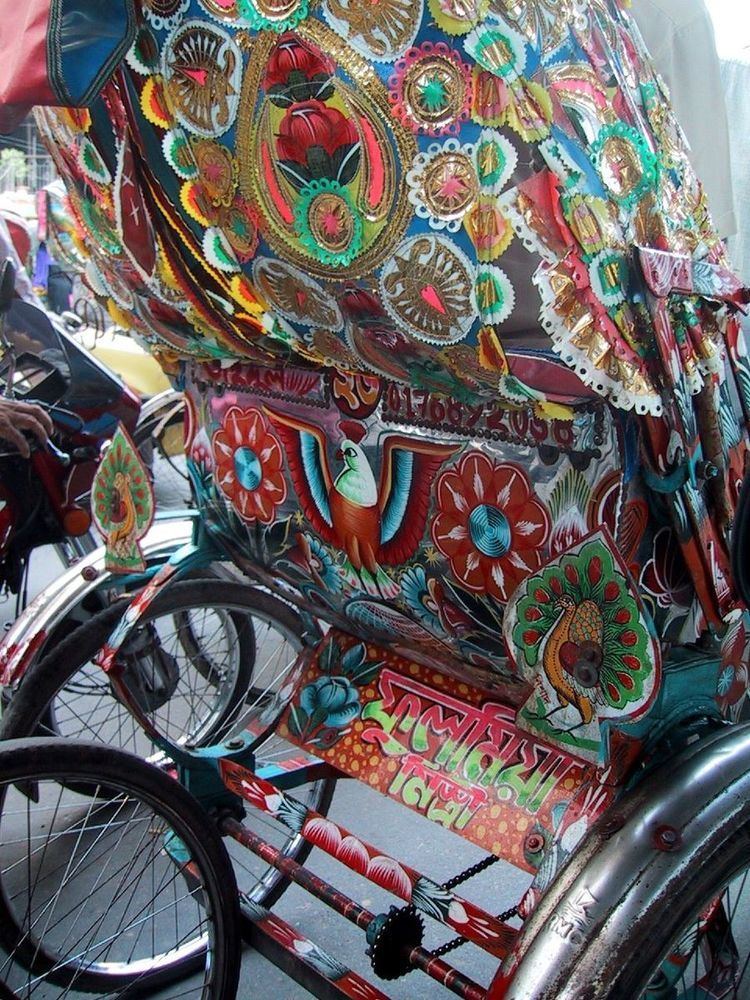 | ||
Rickshaw art in Bangladesh reflects the artistic craftsmanship of the colorful rickshaws that operate in Bangladesh.
Contents
Background
Cycle rickshaws (রিকশা riksha) are the most popular modes of transport in Bangladesh and are available for hire throughout the country including the capital city Dhaka, known as the "Rickshaw Capital of the World".
Approximately 400,000 cycle rickshaws run each day.
Rickshaw art
The three wheeled pedicab, more commonly known as rickshaws of Bangladesh has been around since the 1940s. Initially, they were undecorated, but starting in the late 1940s, the faces of movie stars began appearing as decorative motifs on shields at the back of the rickshaws along with a variety of floral paintings. The unique trend of rickshaw art started from Rajshahi and Dhaka in Bangladesh and took its own style in each district. For instance, Chittagong being a more pious city then Dhaka mostly had floral or scenery in the rickshaws where as Comilla has plain rickshaws with beautiful dark blue or green hood on which is sewn an appliqué of a minaret or floral design enshrining the word "Allah".
The art on moving wheels were done using very bold, bright and raw colors, like fluorescent green, dark red and so on. The blaze of colors also help to make them long lasting.
Author Joanna Kirkpatrick states her definition of rickshaw art:
I consider it "peoples' art". It is not necessary to force it into a unitary category as it combines folkloric, movie, political and commercial imagery and techniques. It serves the expression of heart's desires of the man in the street for women, power, wealth, as well as for religious devotion. Rickshaw art also serves prestige and economic functions for the people who make, use and enjoy it.
Rickshaw art also reflect the economic globalization process, which is occurring all over the world today, for instance those rickshaws with Osama Bin Laden's pictures. This museum of folk art is not only painted but is also decorated with tassels, tinsel and colourful plastic and hood works.
Rickshaw art covers whole rickshaw decoration, from painted backboards and rear side panels to cut-outs appliquéd on to hoods and brass vases replete with plastic or paper flowers. The painted rectangular metal board at the backside, between the two wheels, leaves a trail of passion that the Rickshaw artist puts in his creations.
These living pop art culture of Bangladesh is done by illiterate rickshaw artists. They learn their techniques by living with Ustat ( master ) from boyhood. They do not have copyrights, even most of case do not mentioned name in art also. But in the back of rickshaw generally having mark of maker with bold steel pin, for example - " Fazlu Mistri ".Nowadays the rickshaw art and artist are in 'struggle of existence'. The third and fourth generations artists are not interested to this art, do not feel pride because of low income of dollar two to three a day and recognition.
